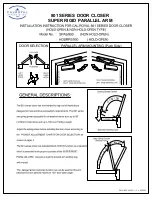
SKU 55594
For technical questions, please call 1-800-444-3353.
Page 19
TROUBLESHOOTING
Symptom
Probable Cause
Suggested Solution
Welder does not operate
Or continually blows fuses.
1.
Improper fuse or circuit
breaker.
2.
Fuse blown or circuit breaker
tripped.
3.
Thermal overload protection
activated.
4.
Using incorrect welding
techniques.
1.
Replace fuse, reset
breaker, or use
delayed action
breaker.
2.
Replace fuse or reset
breaker.
3.
Wait until the unit
cools down and try
again.
4.
Review
recommended
welding techniques.
Welding current low or weak.
5.
Low line voltage.
6.
Poor Cable connections.
5.
Check power source
for at least 120 volts at
20 Amps.
6.
Check and tighten all
Cable connections.
Will not hold an arc.
7.
Using a DC welding rod.
8.
Using a large diameter rod.
7.
Use a proper AC
welding Electrode.
8.
Use a rod of 0.078”
diameter (maximum).
INSPECTION, MAINTENANCE, AND CLEANING
1.
WARNING!
Make sure the Power Switch (9A) is in its
“OFF”
position.
Unplug the Power Cord Plug from its electrical outlet, and allow the Welder to
completely cool before performing any inspection, maintenance, or cleaning
procedures.
2.
Before each use
, inspect the general condition of the Welder. Check for
damaged electrical wiring, loose connections, cracked, burnt, or broken parts,
and any other condition that may affect its safe operation. If abnormal noise or
vibration occurs, have the problem corrected before further use.
Do not use damaged equipment.
3.
Every six months:
Have a
qualified technician blow off or vacuum dirt and dust
deposits on the welding Transformer and other internal components. Dirt or dust
deposits on the welding Transformer and other internal components may reduce
the insulating property or cause overheated Transformer.
During heavy usage,
clean monthly.




































